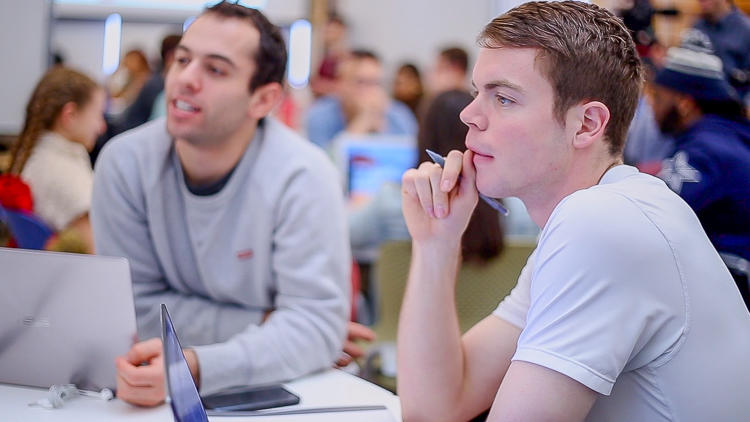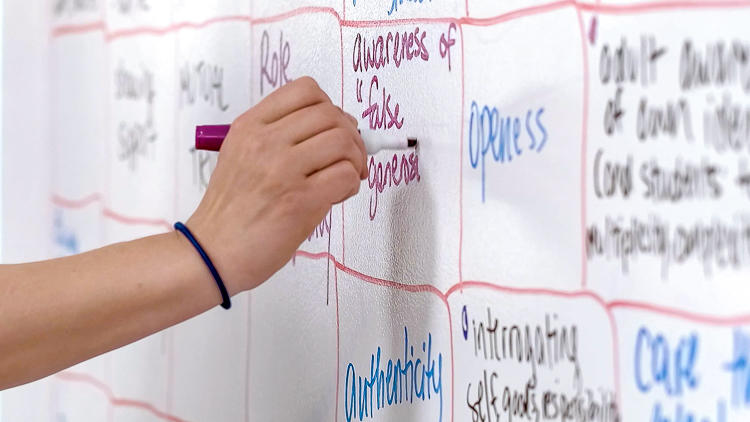In a lecture-style course, it can be challenging to assess student understanding in real-time, and the voices of frequent participants are not always representative of the class as a whole. Just because no one asks a question, it does not mean the whole group is on the same page. To get a quick snapshot students’ understand of new material, in-class polling can be useful. In this video, Dan Levy demonstrates how he uses interactive polls to check for understanding and peer discussion to clarify misunderstandings.
Conducting in-class polling and peer discussion
Instructor
Dan Levy, Senior Lecturer in Public Policy
Student Group
Graduate
School
Harvard Kennedy School
Course
Advanced Quantitative Methods
Group Size
74 students
- If you don’t have access to clickers, free sites like PollEv.com allow you to quickly gauge student opinions, most often anonymously. Students vote using their cell phones or laptops and results are tabulated immediately.
- Use polls purposefully: You might conduct a poll to gather student opinions, to surface common misconceptions, or to challenge students to identify a best answer from a range of good options.
- Review polling data privately before sharing with the class. If most students have gotten the right answer, it may not be worth class time to discuss the results. On the other hand, if students tend to be split in their responses, invite them to talk with a neighbor who answered differently to probe for differences in opinion and clarify misconceptions. You might even ask students to vote again after talking with a peer.
- Use the fresh data to make on-the-fly instructional decisions. If polling indicates students seem to have a good handle on a topic, you might move forward; if they seem to be struggling, some re-teaching is likely warranted.
- Peer instruction, a teaching method in which students engage deeply with concepts, in part by explaining concepts to their peers, has been linked with increased conceptual reasoning and problem-solving in the physics classroom (Crouch & Mazur, 2001)
- When questions are designed to externalize student understanding, in-class polling can help monitor peer-learning methods (Caldwell, 2007)
- Kay and LeSage review the literature on the efficacy and usage of clicker technology. They find that clicker technology can help improve the classroom environment, increase attendance, participation and engagement. Clickers can also be used in assessment, either formative or normative and to give instructors and students prompt feedback. However, there are challenges associated with clicker technology such as developing questions that probe conceptual or deep understanding and increased student confusion when incorporating multiple perspectives in the classroom (2011).
- Vanderbilt’s Center for Teaching has a comprehensive guide on incorporating and using “Classroom Response Systems (‘Clickers’)”
- Turning Technologies, whose clickers are the standard at Harvard’s FAS, features a page of best practices
- Former Harvard Professor and Director of Vanderbilt’s Center for Teaching Derek Bruff shares tips and strategies for using clickers in his blog Agile Learning




